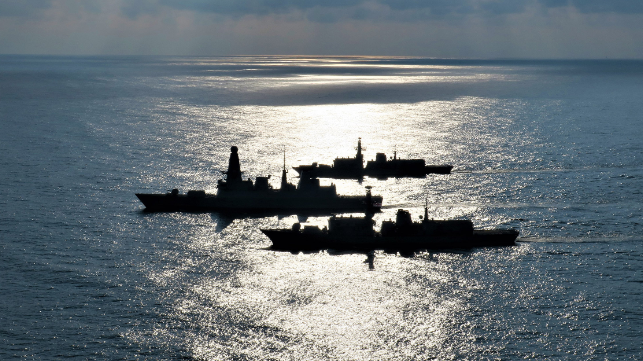To Defeat Advanced Anti-Ship Missiles, Royal Navy Turns to AI

The Royal Navy is using artificial intelligence for the first time at sea in a bid to defeat missile attacks. Leading-edge software is being tested at sea against live missiles during the largest exercise of its type off the coasts of Scotland and Norway.
Involving more than 3,000 military personnel, exercise Formidable Shield tests the ability of NATO warships to detect, track and defeat incoming missiles, from sea-skimming weapons traveling at twice the speed of sound to ballistic missiles.
Three Royal Navy warships are taking part in the exercise, which runs until early June: destroyer HMS Dragon and two frigates, Lancaster and Argyll.
HMS Lancaster and Dragon are trialing artificial intelligence and machine learning applications which offer a glimpse of the future of air defence at sea. Experts from the UK defense laboratory Dstl and industry partners from Roke, CGI and BAE Systems are using the three-week exercise to test their ‘Startle’ and ‘Sycoiea’ systems.
Startle is designed to help ease the load on sailors monitoring the "air picture" in the operations room by providing real-time recommendations and alerts.
Sycoiea builds upon this, effectively allowing operations room teams to identify incoming missiles and advise on the best weapon to deal with them more quickly than even the most experienced operator.
Although experiments with AI have been conducted before, this is the first time it’s been tested against live missiles, said Lancaster’s Weapon Engineer Officer Lieutenant Commander Adam Leveridge.
“Observing Startle and Sycoiea augment the human warfighter in real time against a live supersonic missile threat was truly impressive – a glimpse into our highly-autonomous future.”
Alasdair Gilchrist, program manager for Dstl said it was “imperative” that Britain continued to invest in the combat systems installed on Royal Navy warships to ensure they meet present and future challenges. “Being able to bring get the AI onto the ships is a massive achievement, and while we can prove the AI works in the labs, actually getting Navy personnel hands on is brilliant,” he said.
This article appears courtesy of Royal Navy News and is reproduced here in an abbreviated form. It may be found in its original form here.
The opinions expressed herein are the author's and not necessarily those of The Maritime Executive.
